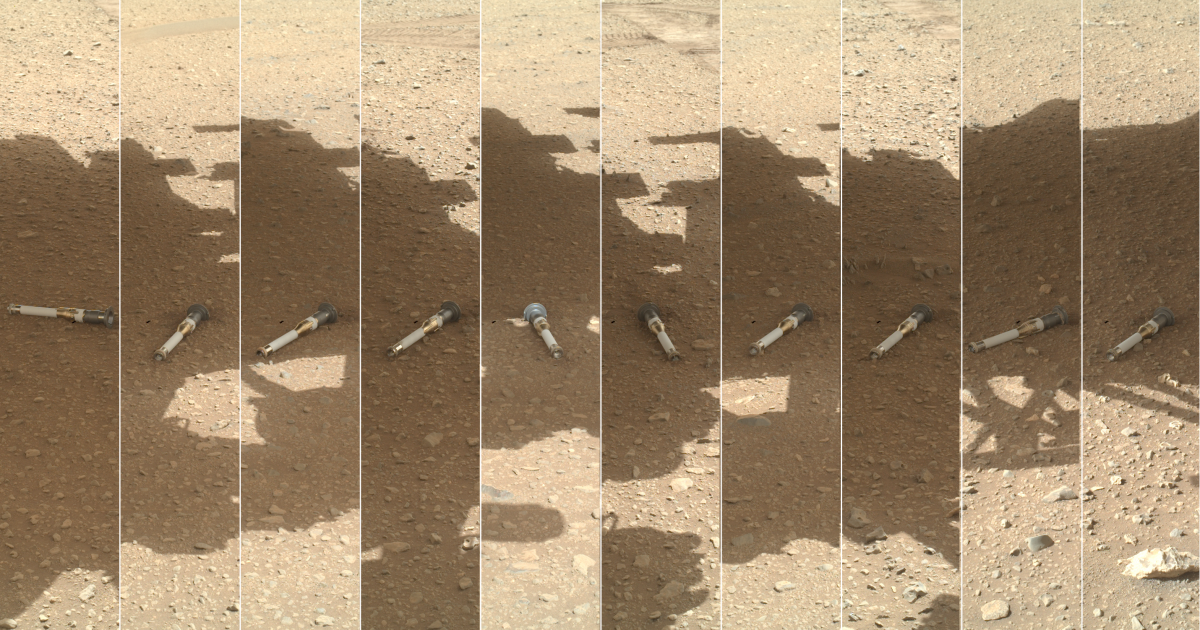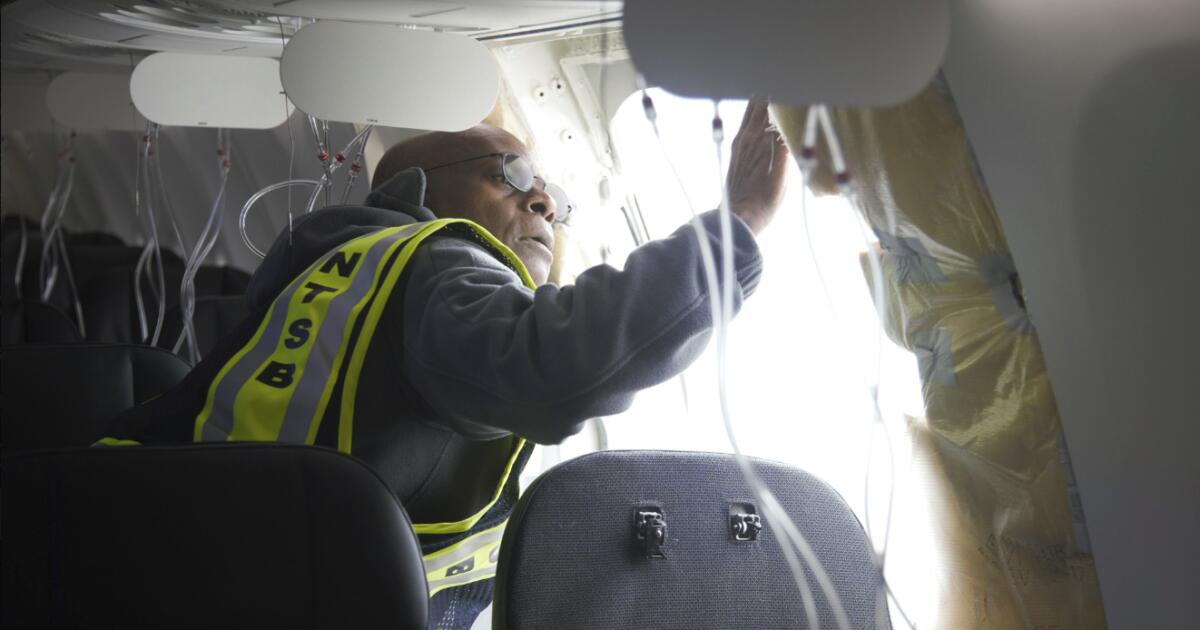A bipartisan congressional agreement on NASA's final budget for the current fiscal year offers a glimmer of hope that the space agency's ambitious but troubled effort to bring pieces of Mars to Earth can recover from the devastating cuts that led to hundreds of layoffs at the Jet Propulsion Laboratory in La Cañada Flintridge.
This week, the House and Senate appropriations committees finalized a deal that would provide a minimum of $300 million for the Mars Sample Return mission, managed by JPL. That's a sharp drop from the $822.3 million NASA spent on the program last year, and less than a third of what the Biden administration requested.
Mars Sample Return would bring back rocks, debris and dust from the Red Planet's Jezero Crater that has already been gathered and sealed in tubes by the Perseverance rover. The MSR mission envisions a lander that would retrieve those tubes and use a small rocket to transport them into Martian orbit, where they would meet a spacecraft that would make the return trip to Earth, arriving about five years after the orbiter launches. .
The ultimate goal is to analyze the samples for evidence that life once existed on Mars. That work may be left to future generations of scientists who will have access to technologies that do not yet exist, NASA says.
Mars Sample Return, a joint project with the European Space Agency, is an extraordinarily complex technical effort that scientists say would be a crucial step toward future human missions to Mars. However, the project has been plagued by delays and rising costs.
NASA Administrator Bill Nelson ordered the agency to prepare for that $300 million figure earlier this year. That order has resulted in the loss of nearly 700 employees and outsourced jobs at JPL since January.
The Senate seemed poised to condemn the mission outright when it released its proposed budget in July, writing that the appropriations committee was “alarmed” by the mission's slow progress despite steady funding.
As a result, the Senate demanded a year-by-year breakdown of how NASA planned to accomplish the mission within the $5.3 billion then estimated total lifetime cost of the MSR. Without that, the committee warned“NASA must provide options to descope or rework MSR or face mission cancellation.”
In the budget agreement released Sunday, lawmakers clarified that the Senate proposal's ultimatum was no longer on the table.
“MSR is the top priority of 2022 Decennial Planetary Science Survey but there is concern that the expected launch schedule will continue to slip,” the lawmakers said in a bipartisan statement. statement of members of both the House and the Senate.
Last year, NASA commissioned a independent review of the mission, which found that MSR was “unprepared to be led effectively” and was hampered by “unrealistic budget and schedule expectations from the beginning.” The planned 2027 and 2028 launch dates for the lander and orbiter are likely impossible to meet, the review noted, and even a 2030 launch appears doubtful without a massive injection of cash much larger than what Congress has budgeted.
from NASA answer The revision is expected to arrive this spring. Once this is ready, the current budget gives NASA 60 days to present Congress with a plan for the future of the mission. This may include requests to redirect up to $649 million of its budget to Mars Sample Return, which would raise the program's spending to the level initially requested by Biden.
“The agreement further directs NASA to make no further workforce reductions in the MSR program until such a report is provided,” the statement said.
In January, 100 JPL contractors were fired after NASA informed the laboratory. to reduce spending, despite strong objections from California legislators. Last month, the lab laid off 530 employees (about 8% of its workforce) and 40 additional contractors.
Many of those who lost their jobs were veterans whose departures surprised their co-workers, JPL employees said.
Some of the state's representatives in Washington expressed optimism that the mission could get back on track.
“This funding agreement is a step in the right direction to ensure California continues to lead our nation's space program,” Democratic Sen. Alex Padilla said in a statement.
“The fight is not over,” Rep. Judy Chu (D-Monterey Park) said in a statement. “I urge NASA to quickly implement the new appropriations guidelines so that officials can consider rehiring JPL employees and contractors who were laid off due to an outdated Senate appropriations bill that is no longer being considered by the Congress”.
A JPL spokesperson said this week that no personnel changes were expected at the lab before NASA's response to the review is released. Late last month, NASA's Office of Inspector General released its own audit of the Mars Sample Return mission, whose projected cost has nearly doubled to more than $10 billion since the program's inception.
The audit determined that the difficulty of deciding on a design for the mission's Capture, Containment and Return System significantly skewed budget and schedule estimates. He also attributed some of the mission's problems to a mismatch in management and communication styles between NASA and ESA.
But in reckoning with past mistakes and planning the way forward, management must address “intrinsic characteristics of large, complex missions like MSR…for example, a full understanding of the complexity of the mission, an excess of optimism initial, a non-optimal layout/design”. architecture and the ability of the team to perform according to expectations,” the audit said. He warned project managers “not to simply attribute past cost growth to the COVID-19 pandemic, inflation or supply chain issues.”
The budget agreement between the House and Senate appropriations committees allocates a total of $24.875 million for all NASA operations this fiscal year, a decrease of $500,000 from last year's budget. The difference is due entirely to the half-million-dollar cut Congress demanded for the Mars Sample Return mission.
The figures are not technically final until the budget is approved, something that is expected to happen this week without further changes.












